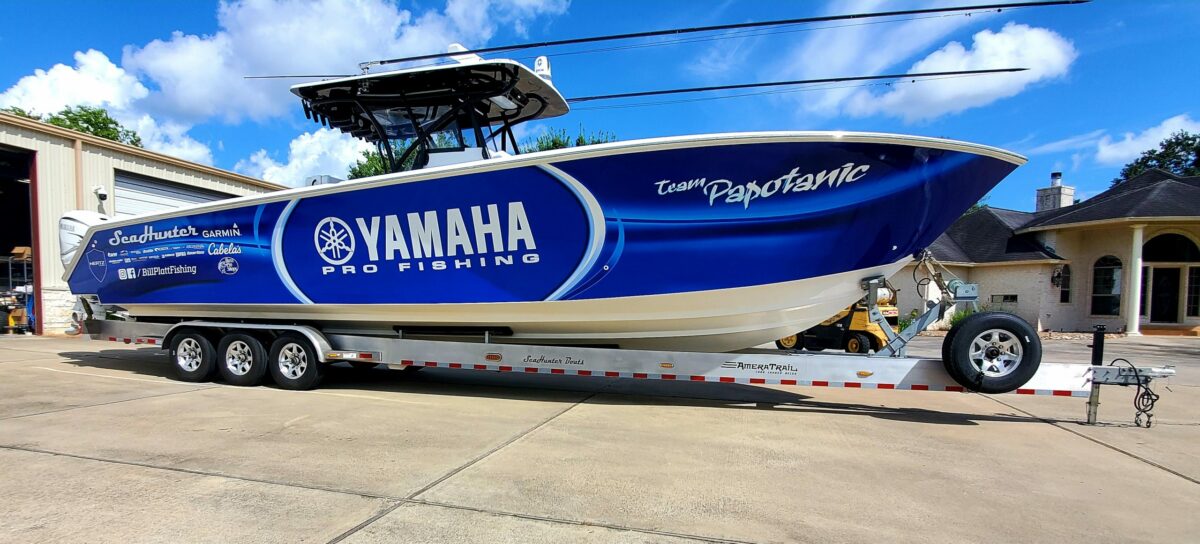There was a time, not too long ago, that blue water marlin tournaments were the exclusive province of inboard powered sportfishers.
Center consoles that fished saltwater tournaments were either targeting kingfish or viewed as an intrepid novelty”hardcore fishing teams who ran around on boats that, while seaworthy, lacked many of the creature comforts considered necessary for extended offshore jaunts. These days things have changed.
 In even the most demanding of bluewater fishing applications the big money blue marlin tournaments on the Gulf and East Coast where vessels commonly run hundreds of miles center consoles not only participate, but cash tournament checks. Once as divided as Catholics and Protestants in Northern Ireland, the market for large center consoles and sportfishers has become increasingly blurred with considerable overlap on both sides.
In many ways it is the evolution of the center console that lies at the heart of the market shift. Modern center console boats have gotten bigger, faster, more feature-rich and increasingly able to compete on equal footing in most fishing applications. This is the story of that evolution told by the professionals who have made it happen.
In even the most demanding of bluewater fishing applications the big money blue marlin tournaments on the Gulf and East Coast where vessels commonly run hundreds of miles center consoles not only participate, but cash tournament checks. Once as divided as Catholics and Protestants in Northern Ireland, the market for large center consoles and sportfishers has become increasingly blurred with considerable overlap on both sides.
In many ways it is the evolution of the center console that lies at the heart of the market shift. Modern center console boats have gotten bigger, faster, more feature-rich and increasingly able to compete on equal footing in most fishing applications. This is the story of that evolution told by the professionals who have made it happen.
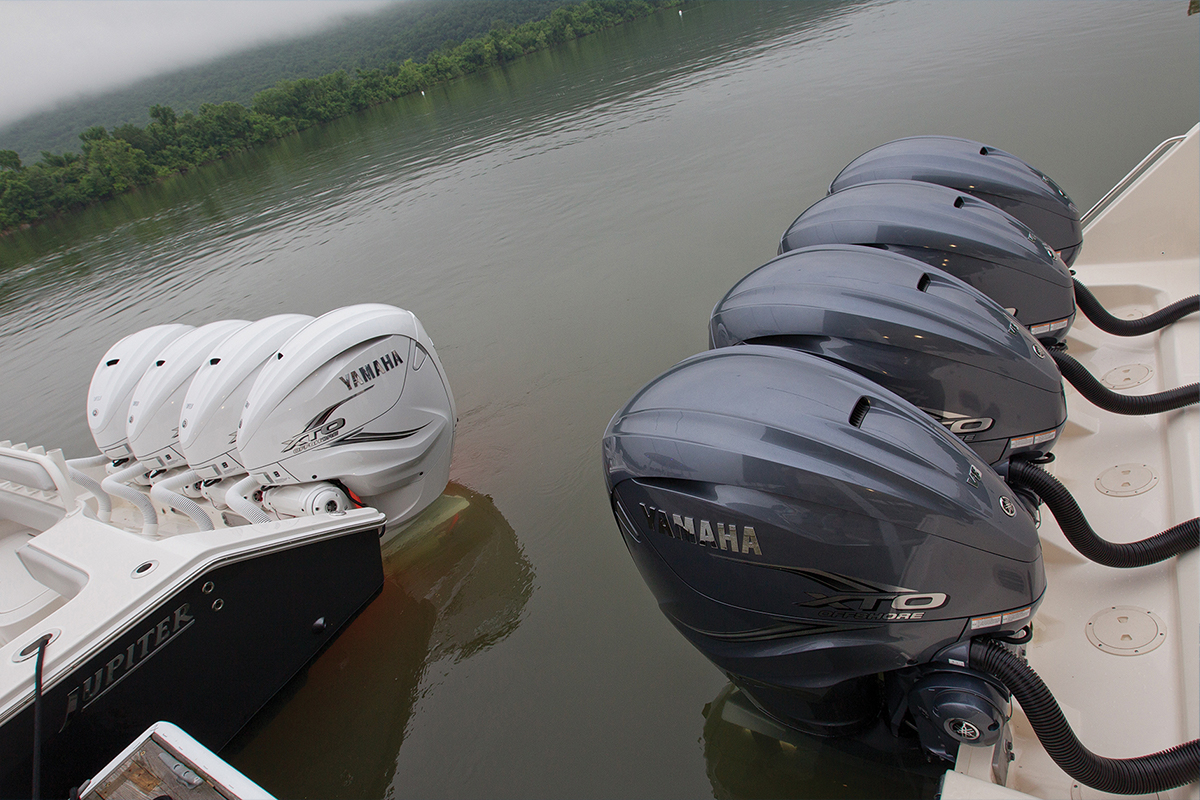
The new Yamaha XTO is designed for serious offshore applications. Photo courtesy Yamaha
What Everybody Already Knows About Center Consoles
When compared to diesel-powered, inboard sportfishers, there are a number of things that center console enthusiasts are quick to point out. When compared to sportfishers, center consoles can be more economical to operate, burn less fuel, be more portable (easier to trailer), more maneuverable, and less dependent upon the maintenance by a full-time crew. The interesting thing about these attributes aside from the fact that everyone already knows them is that these points of difference are in fact less pronounced in their degree than they once were. As boats grow larger, faster and heavier those who choose them make the choice less because of their ease of use and more for what they can do run 80 miles per hour and provide a fishing platform that includes nearly everything aside from an airconditioned salon.
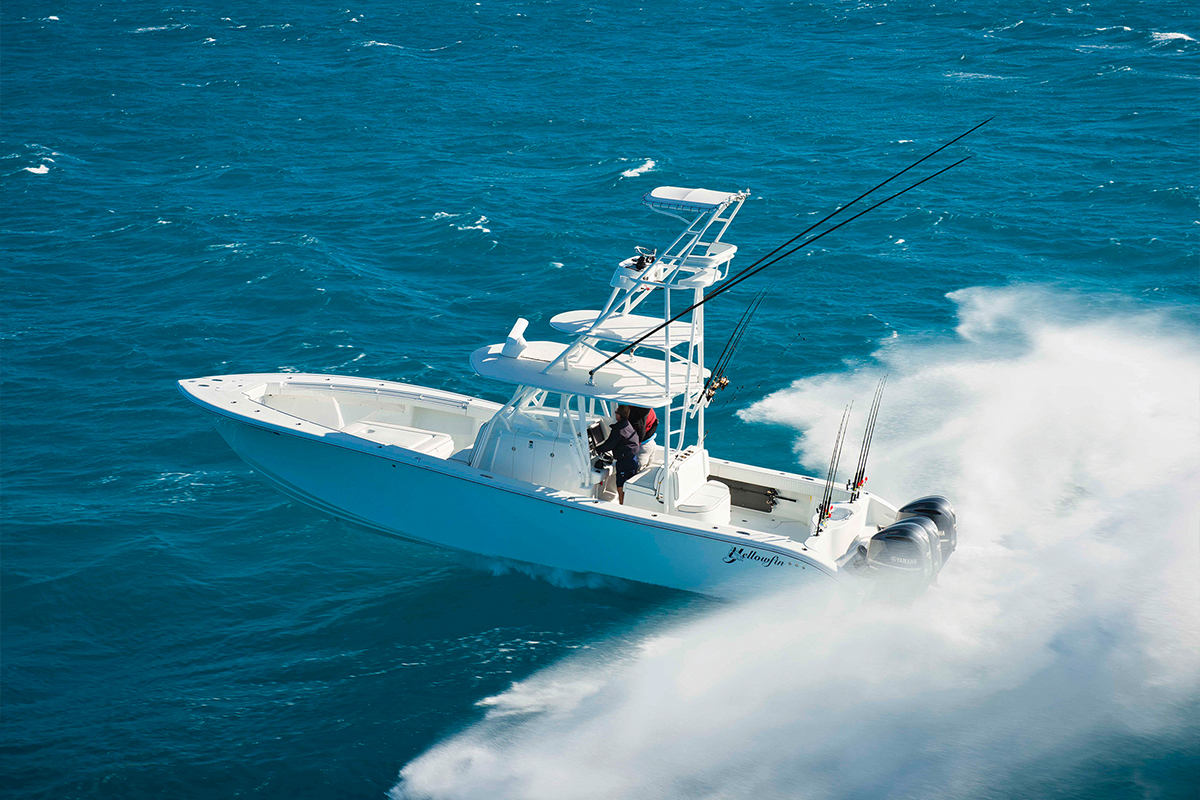
A Yellowfin 39 with full tower is built ready for tournament competition. Photo courtesy Wylie Nagler
Evolution in Context
There is indeed an interesting component to the trajectory of how center consoles are evolving. The boats are becoming larger. With a larger platform, utilizing ever larger numbers of increasingly sophisticated outboards, the modern center console is much more than the hull, console and outboard it once was.
It a natural evolution. If youre spending upwards of a half a million dollars you want an everything boat, says Joe Neber, owner of Contender Boats. The market follows the motors for all boats, inboards and outboards. Were all following the power curve.
The market growth has been surprising. Boats have gotten bigger and bigger heavier and heavier. Customers are also demanding a more feature-rich environment. Twenty years ago, a center console was a console and a hull. The boats have grown not only longer, but wider and heavier, says Ry Landry, product information manager for outboards at Yamaha. A center console now includes multiple Seakeepers, a complete set of speakers, underwater lighting, ice machines, and more.
As the platforms become heavier, they rely increasingly on more powerful and more efficient propulsion systems. It is little wonder then that much of the credit for the expanding capacity of center consoles lies in technological advancement in the outboard market. Ten years ago, a 25-foot center console was a big one. Back in 1999-2000, the biggest center console was 31- to 33-feet.
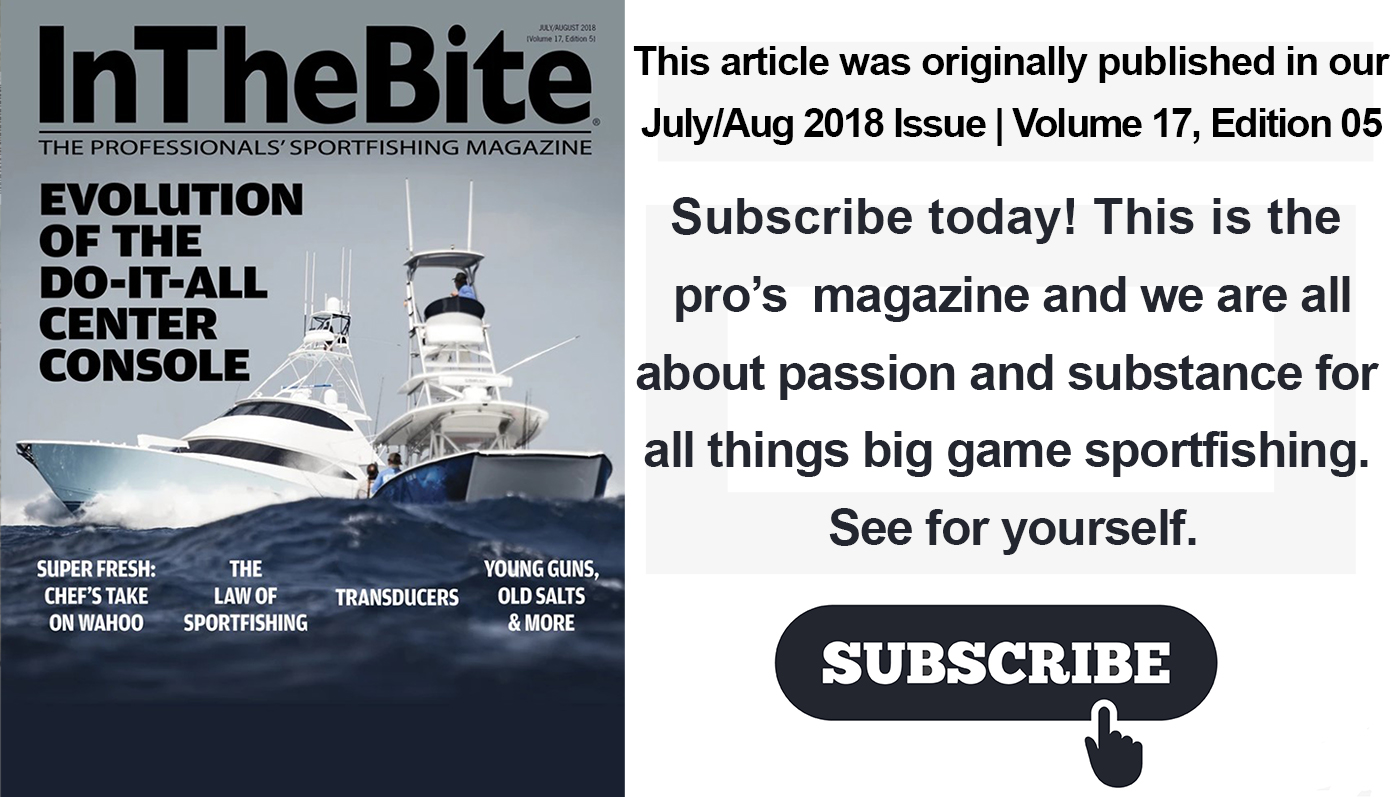 Then a 36 showed up, then a 39, then a 42. It been a quick evolution, says Wylie Nagler, owner of Yellowfin. Newer and bigger engines allow builders to make bigger boats. Boats have evolved as the engines have evolved. Nagler credits two engine breakthroughs in particular. The Yamaha and Mercury 300-horsepower models were a breakthrough for bigger boats, especially those who now have triples. The 300 horsepower models and the four stroke engines were important.
Demand in the offshore center console boating segment has exploded in the last five years. As boats have gotten larger and the volume of center consoles has increased significantly, there has been a need for more high-power outboards. Were evolving our fourstroke outboards to meet that need, says Brian Meyer Category Manager at Mercury Marine.
Demand has led to a large and significant investment in four strokes. The growth of the four-stroke outboard market is one of the reasons why we have invested more than $830 million at our global manufacturing headquarters and more than $1.1 billion globally since 2009 on expansion and R&D to support demand from our customers. Weve invested to build outboards with all the advantages that come with four-stroke engine design, but with lighter weight and more power. These attributes are highly desirable and drive more consumer interest. So, it a chicken and the egg scenario: consumer demand drives investment and investment drives consumer demand.
Then a 36 showed up, then a 39, then a 42. It been a quick evolution, says Wylie Nagler, owner of Yellowfin. Newer and bigger engines allow builders to make bigger boats. Boats have evolved as the engines have evolved. Nagler credits two engine breakthroughs in particular. The Yamaha and Mercury 300-horsepower models were a breakthrough for bigger boats, especially those who now have triples. The 300 horsepower models and the four stroke engines were important.
Demand in the offshore center console boating segment has exploded in the last five years. As boats have gotten larger and the volume of center consoles has increased significantly, there has been a need for more high-power outboards. Were evolving our fourstroke outboards to meet that need, says Brian Meyer Category Manager at Mercury Marine.
Demand has led to a large and significant investment in four strokes. The growth of the four-stroke outboard market is one of the reasons why we have invested more than $830 million at our global manufacturing headquarters and more than $1.1 billion globally since 2009 on expansion and R&D to support demand from our customers. Weve invested to build outboards with all the advantages that come with four-stroke engine design, but with lighter weight and more power. These attributes are highly desirable and drive more consumer interest. So, it a chicken and the egg scenario: consumer demand drives investment and investment drives consumer demand.
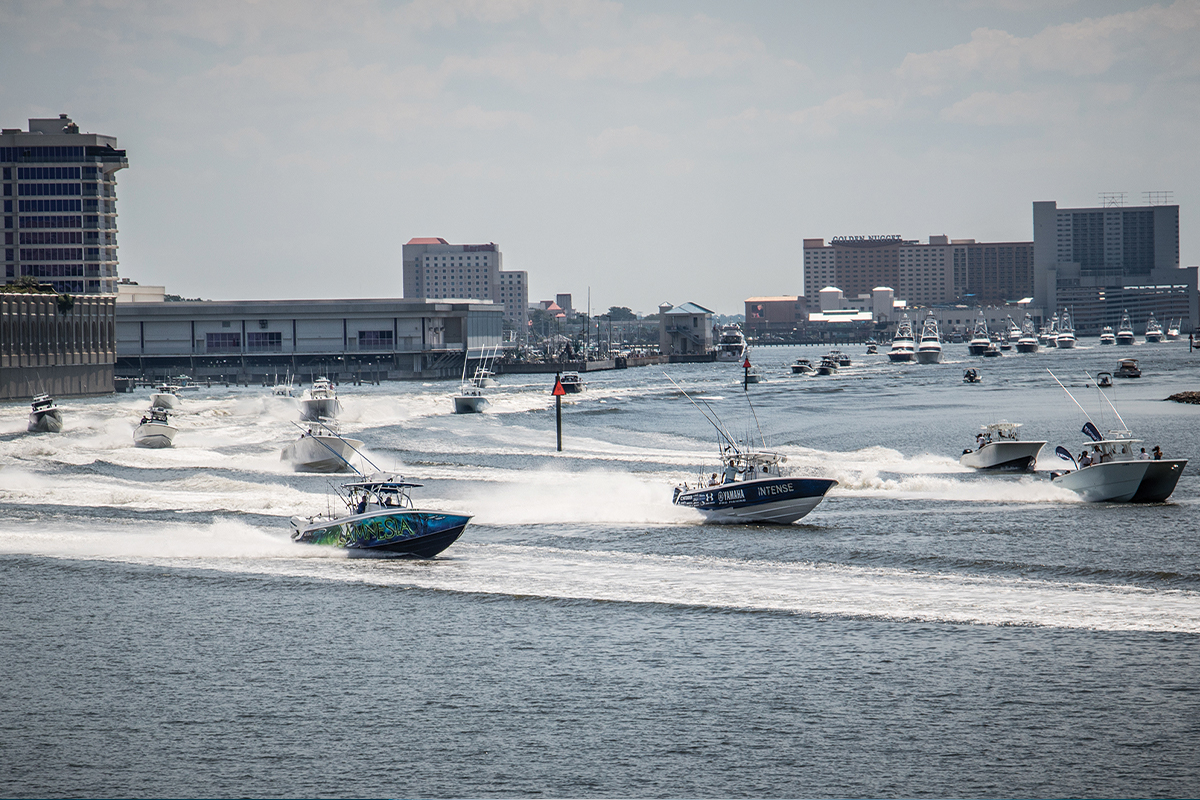
Need proof of the increased presence of center consoles in marlin tournaments? Look no further than the shotgun start of the 2018 Mississippi Gulf Coast Billfish Classic. Photo courtesy @mgcbc
A Story of Refinement and Collaboration
The evolution of the modern center console is as much a story of refinement as it is a story of growth. Sure, the vessels themselves have grown longer and wider. Sure, they have also become equipped with more powerful engines. Viewing the story through this lens, however, tells only part of the story. The modern, fully-outfitted center console is one of engineering marvel and seakeeping ability. The step hull design smooths the ride and reduces fuel consumption. Steps are complicated things. The benefit of a step is that it breaks the inherent suction of water on a hull moving through it. Apertures on the side of the boat suck in air and introduce it under the boat. This breaks the suction and reduces the drag coefficient like riding on air. The effect is a reduced need for trim tabs and a more natural riding angle, describes Captain David Costley of Invincible Boats. The result is increased speed and decreased fuel consumption. A 42 Invincible running at 50 miles per hour burns one gallon of fuel per hour. Wide open with triple 350 Mercurys, the boat will run 69 miles per hour. Another trend in the offshore market is that customers want more features, including engine features. Modern engines are completely digital smooth and precise, complete propulsion systems. The Helm Master system with set points gives the technical ability for someone to get the boat where they want it and keep it there, says David Meeler, product planning and information manager for Yamaha. Our application engineers work very closely with boat builders to ensure that we provide the power they are looking for. Engineers work with builders on such things as fuel capacity and to spec properly what to design into the boat propellers, for example. The 350-horsepower was developed in collaborations with builders of big center consoles. At the time, a big center console was 26- or 30-feet. Yamaha introduced the four stroke 200hp in 2001. This paved the way to putting big four strokes on the back of boats, it changed the market. The V8 F350 launched in 2008. This transitioned outboard power to larger and larger boats. When adding the 350, we thought customers would change out three 250 horsepower engines for two 350s. It took about a week to see someone put on triples.
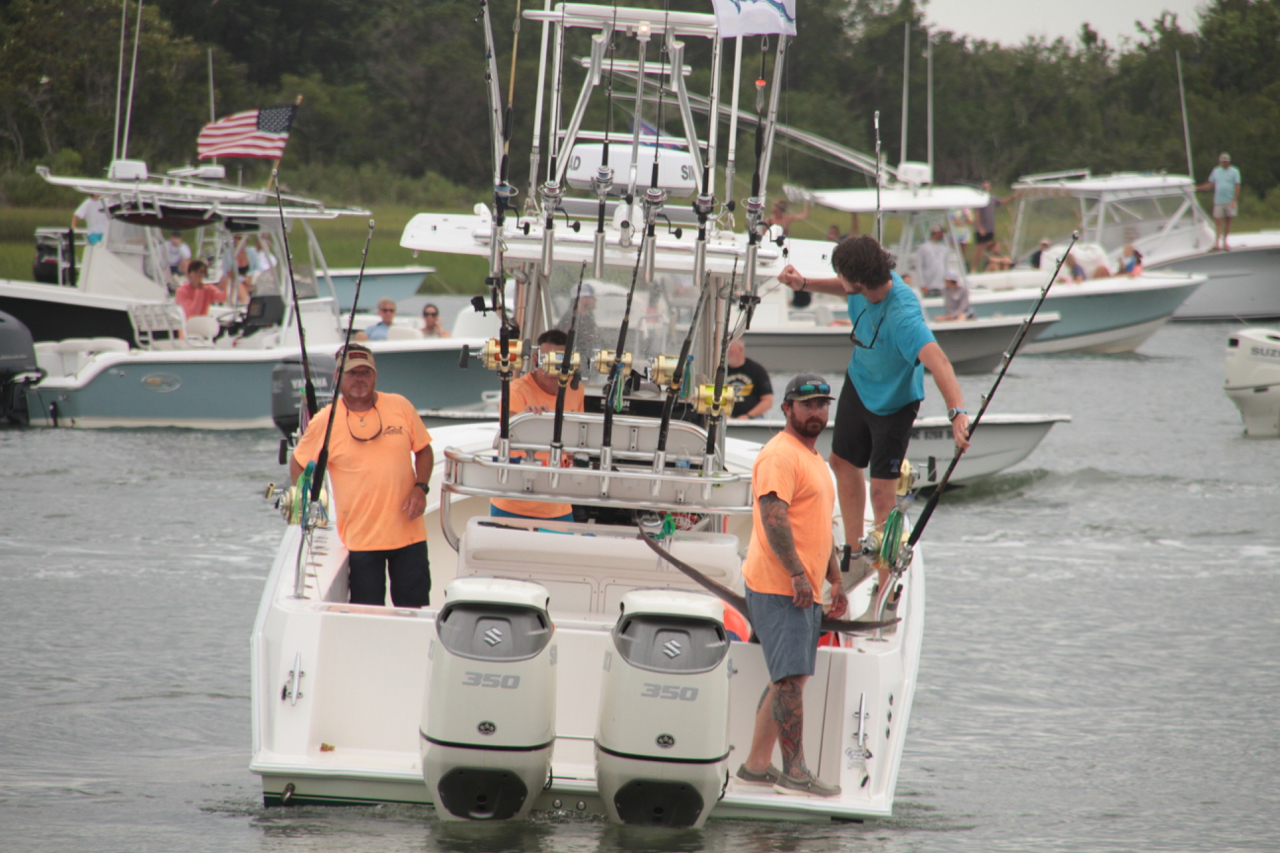
The Pelagic Hunter II team at Big Rock.
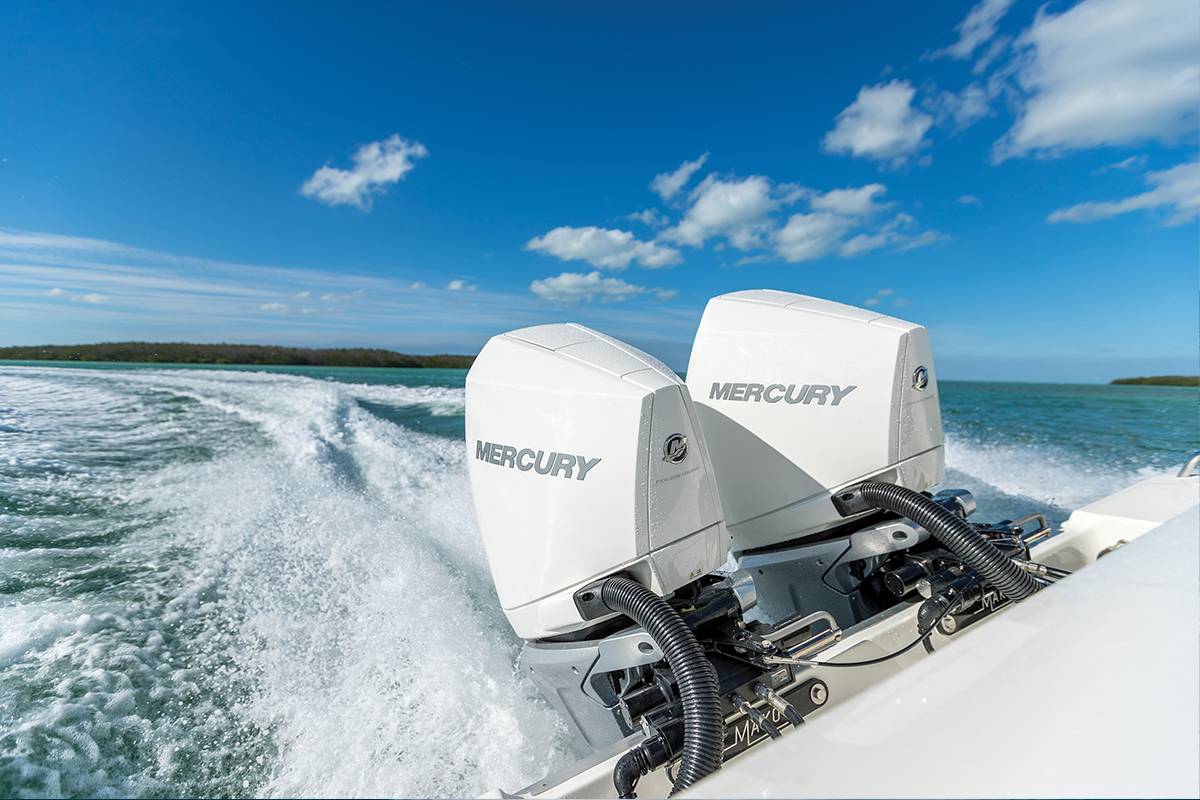
Photo courtesy Mercury Marine
The Fishing
The platforms are becoming large enough to sustain extended offshore campaigns, says Joe Neber of Contender. On stand-up based fishing, in release formats, center consoles are on equal or better standing compared to sportfishers. When you need to put a guy in a chair, sportfishers still retain the advantage. We won the Bisbee tournament when striped marlin were still included in the release division. When it comes to trolling and lure presentation, there can be a bit of a learning curve for captains who have grown up fishing the squared off transoms of inboards. There can be a couple of stumbling blocks the motors are on the exterior and the wake pattern. It a matter of trial and error to find what you and the fish like, says Neber, describing putting together a marlin spread from a center console. One piece of advice: it not what looks good to you that will get you bites. You do not necessarily need to duplicate an inboard spread, you might need to be innovative. When it comes to fishing, it is not just advances in boat building and outboard technology that are making catching marlin and tuna from center consoles increasingly possible. Braided line, and the ability to fit hundreds of yards of backing onto lighter and more compact reels with ever greater drag capacities aid the quest. Advances in stand-up harnesses and boating hardware accessories carbon fiber outriggers capable of handling dredges make the center console fishing platform that much more amenable to standing toe to toe with sportfishers in tournament situations. Let not forget that all of these advances are in addition to propulsion systems that allow many large center consoles to run in excess of 70 or 80 knots. The only thing missing is the salon, galley and air conditioning, says Invincible Captain David Costley. But you have improved ability to catch multiple fish, can put anglers on the bow, can chase fish down¦Towers now give the same height functionality and fishability to center consoles. This gives big advantages to center consoles and it been shown in tournaments over and over again. There have been advances in dredges, making them lightweight and compact the Ledge Logic Dredge Boom, for instance, and advances in all sorts of associated technologies that close the gap. That not to mention the many other modifications. Live wells have come a long way, and pump boxes, too. Center consoles now have the ability to carry lots of live bait, Costley continues. Wylie Nagler of Yellowfin provides a similar perspective. Fighting fish out of a center console you dont fish backward. You run the fish down and get right on top of them, fishing with lighter tackle. You can run parallel to the fish moving forward, not trying to keep up in reverse. It an adaptive approach to fighting fish you can fight them from the front, the side or the back of the boat. Captain Adam Dobson runs the Tito Fishing team tournament boat. Fishing out of a 40-foot, 7 Ocean with triple 350 Verados, Dobson well understands the dynamic of fishing a tournament out of a big center console. The big differences are the speed and maneuverability of the boat. Space is a big factor, too. The use of the bow to chase down fish is important. I like fishing out of a center console. It keeps everybody in the element nobody can go into the salon. It keeps everyone focused and makes communication a lot easier, too, Dobson relates. I would rather fish a center console (than a sportfisher) if weather permits. Dobson and crew fished the White Marlin Open last year and plan to repeat this summer. We had the range to fish anywhere we wanted to go. We got to the fishing grounds a lot faster, which gave us an edge. We got out before lines in, which helps with scouting, looking for bait, and the like, he says.
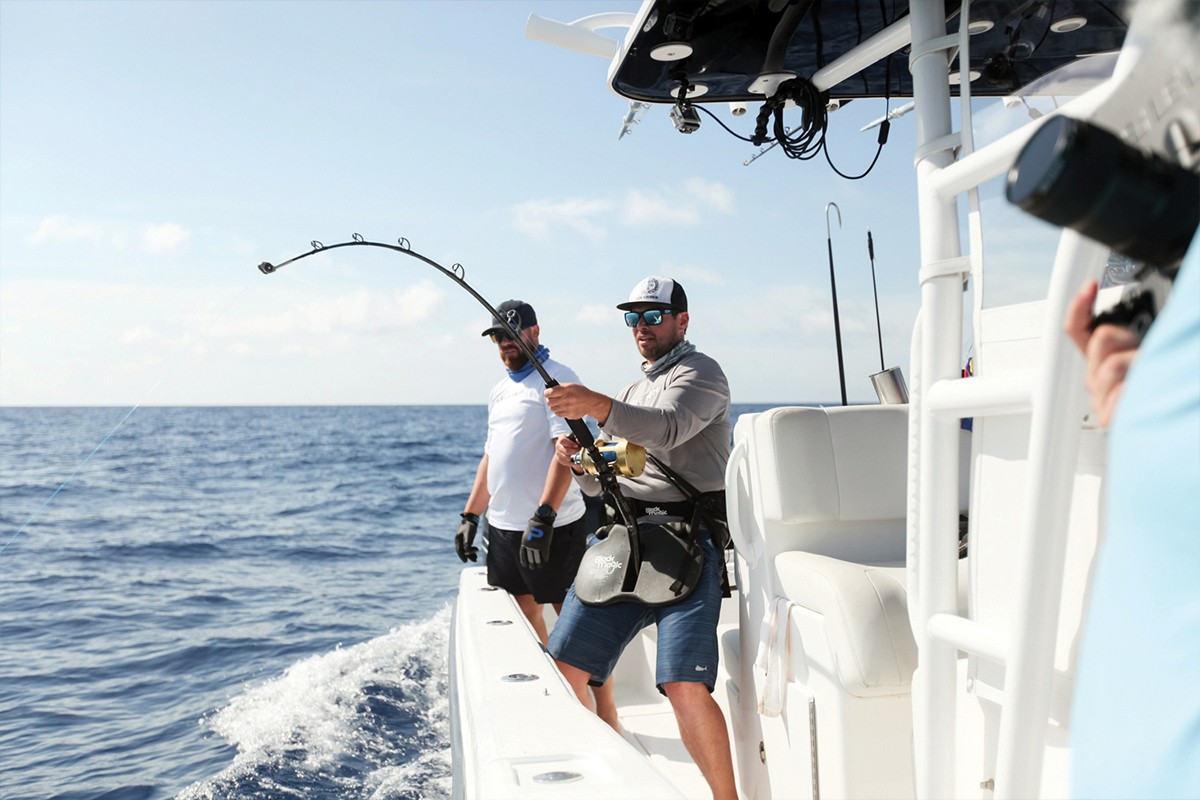
As seen on this Invincible 36, King Size, the walk-around design of large center consoles provide plenty of options when fighting big fish. Photo courtesy Steve Dougherty
Wide Open
There was a time when the decision to fish a long-range blue marlin tournament out of a center console often started with the phrase, Hold my beer and watch this! That time is no longer. The smaller, less powerful center consoles of the past have been replaced by purpose-built bluewater rocket ships that provide competitive advantage and the ability to run 80 knots. The evolution of the do-it-all, make-it-happen large center console of today is a recent one and something has permanently changed the sportfishing landscape.













